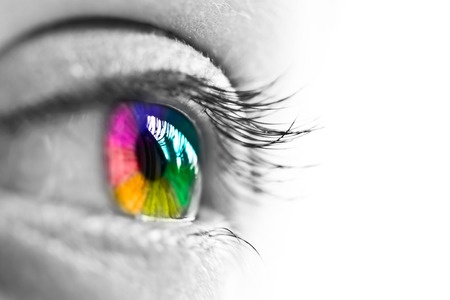What Your Eyes Reveal About Your Sexual Orientation
November 24, 2017 by Justin Lehmiller

Sex scientists have a lot of tools to choose from when it comes to measuring people’s sexual orientation. However, every tool poses a unique set of challenges.
The most straightforward way to measure someone’s sexuality is simply to ask them who they’re attracted to or what their sexual identity label is. The downside to this method, of course, is that not everyone will answer honestly. For instance, studies have found that some heterosexual men who espouse homophobic views actually demonstrate strong genital arousal in response to gay porn, likely because they’re in denial about their sexuality. As the famous line from Shakespeare’s Hamlet goes, they “doth protest too much, methinks.”
Based on these findings, you might be tempted to conclude that genital arousal measures are superior to self-reports when it comes to measuring sexual orientation; however, other studies have found that people can fake their genital responses by thinking about gross stuff and looking away from anything that might turn them on while their arousal is being measured.
In light of this, what we really need is a new tool that doesn’t allow participants to suppress or hide their responses—and some scientists think they may have found it: pupil dilation. This is the subject of a recent column I wrote over at TONIC.
In this article, I explore the results of several studies finding that our pupils dilate (that is, get larger) when we see someone we find to be sexually arousing. Pupil dilation is an intriguing method for studying sexual orientation because it’s a bodily response that occurs automatically—we don’t even realize it’s happening. Another plus is that it doesn’t require anyone to take off their pants or attach devices to their genitals—something that has a tendency to scare many people away from taking part in sex studies in the first place.
However, there’s an interesting caveat to this, which is that heterosexual women don’t exactly show the pattern that you would probably expect (whereas lesbians and gay & straight men do). To learn more about this finding and what it might mean, check out the full article.
Want to learn more about Sex and Psychology ? Click here for previous articles or follow the blog on Facebook (facebook.com/psychologyofsex), Twitter (@JustinLehmiller), or Reddit (reddit.com/r/psychologyofsex) to receive updates.
Image Credit: 123RF/delcreations
You Might Also Like:

Dr. Justin Lehmiller
Founder & Owner of Sex and PsychologyDr. Justin Lehmiller is a social psychologist and Research Fellow at The Kinsey Institute. He runs the Sex and Psychology blog and podcast and is author of the popular book Tell Me What You Want. Dr. Lehmiller is an award-winning educator, and a prolific researcher who has published more than 50 academic works.
Read full bio >

